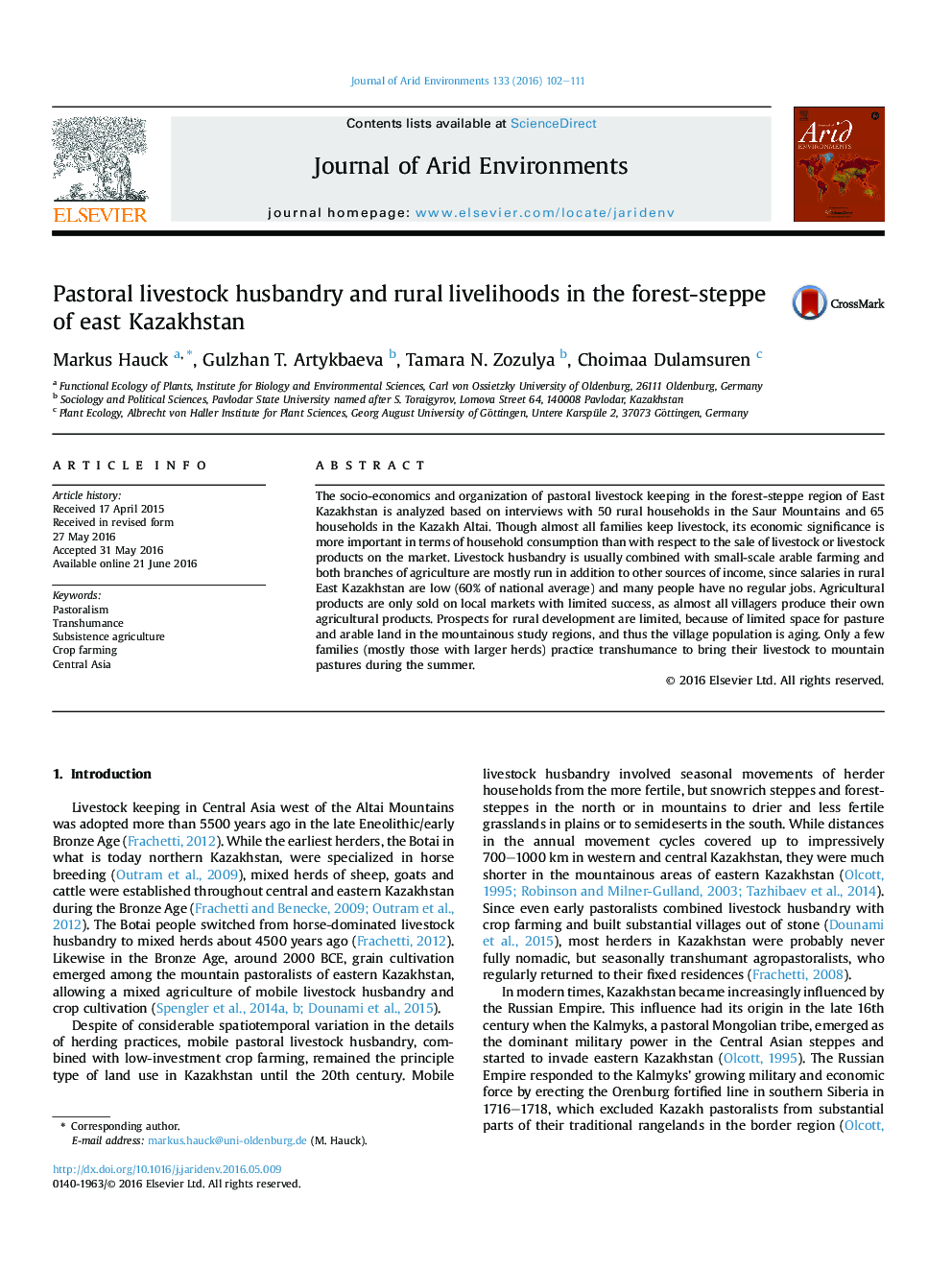| Article ID | Journal | Published Year | Pages | File Type |
|---|---|---|---|---|
| 4392713 | Journal of Arid Environments | 2016 | 10 Pages |
•Pastoral livestock husbandry has a long tradition in Kazakhstan.•It has undergone severe changes in organization and significance.•Owners of large flock move their livestock to montane pastures in summer.•Livestock husbandry is traditionally combined with small-scale crop farming.•Agriculture is mostly for household consumption and limited sale.
The socio-economics and organization of pastoral livestock keeping in the forest-steppe region of East Kazakhstan is analyzed based on interviews with 50 rural households in the Saur Mountains and 65 households in the Kazakh Altai. Though almost all families keep livestock, its economic significance is more important in terms of household consumption than with respect to the sale of livestock or livestock products on the market. Livestock husbandry is usually combined with small-scale arable farming and both branches of agriculture are mostly run in addition to other sources of income, since salaries in rural East Kazakhstan are low (60% of national average) and many people have no regular jobs. Agricultural products are only sold on local markets with limited success, as almost all villagers produce their own agricultural products. Prospects for rural development are limited, because of limited space for pasture and arable land in the mountainous study regions, and thus the village population is aging. Only a few families (mostly those with larger herds) practice transhumance to bring their livestock to mountain pastures during the summer.
